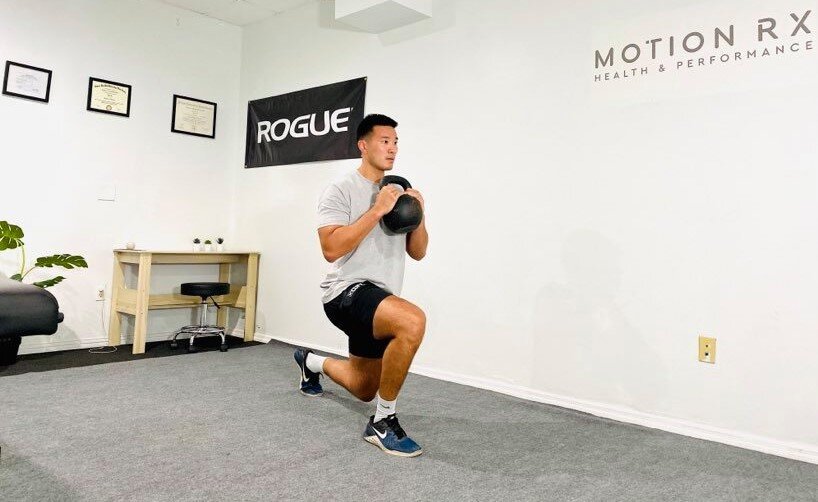What Is BFR (Blood Flow Restriction) Therapy?
learn more about how to add this to increase your training benefits
BFR or Blood Flow Restriction is the application of a tourniquet system to a proximal arm/leg which is inflated to a specific pressure (80% of Limb Occlusion Pressure (LOP) in LE and 50% of LOP in UE) in order to reduce blood flow during exercise. By limiting blood flow and oxygen to the area, we can mimic the metabolic demands and environment, and reap the same strength/hypertrophy benefits as if we were training at a high intensity but without actually needing to utilize heavy resistance or weights.
History of BFR
- The 1970s: BFR was first initially discovered by Dr. Yoshiaki Sato in 1973 where he had sustained an ankle injury from a skiing accident that caused him to be in a cast for 6 weeks. Not wanting to lose muscle mass, he experimented with different belts and isometric exercises on himself. When the cast was removed, doctors were shocked to discover that his leg wasn’t atrophied or tender. Soon after he began experimenting on himself and other people with this method as a means to prevent muscle atrophy and improve muscle strength and hypertrophy.
- BFR In the USA: BFR initially started with the US military and NASA where they utilized BFR as a tool to preserve muscle mass in wounded soldiers to avoid amputation and to maintain muscle mass in astronauts affected by low gravity in space
- BFR Today: Today, BFR is a popular rehab and recovery tool utilized by a large variety of population ranging from professional athletes all the way to your older geriatric population
The Problem
- The American College of Sports Medicine (ACSM) recommends that in order to make increases in muscle strength and size, you need to be lifting weights at a moderate – high intensity- specifically >70% of your 1 rep max (1RM)
- Unfortunately, a lot of times, people aren’t able to lift loads above 70% of their 1RM due to certain limiting factors whether it may be due to injury, pain, or post op surgery protocols. And often, you’ll actually see de-conditioning and even muscle atrophy due to the lack of activity and strength training at the appropriate intensity.
The Solution
- This is where BFR comes in. By restricting blood flow and oxygen to a certain limb, we can create an anaerobic lactic environment that forces the body to recruit more muscle fibers (Type 2) which are typically reserved for more intense and strenuous activity seen when training at 70% of 1RM or higher.
- Studies have shown that BFR can improve release of Human Growth Hormone (HGH), Insulin-Like Growth Factor (IGF-1), and improve VO2 Max - all of which are important for improving strength and endurance during training.
- So by utilizing BFR, we are able to work out at a relatively low intensity and low load (usually 20-30% of your 1RM or even bodyweight), and still reap the same benefits of increasing strength and muscle hypertrophy as if you were lifting at 70% of your 1RM WHILE minimizing stress on tendons, ligaments, and joints!
Who Can Benefit From BFR?
- Athletes who are injured and want to increase their strength but are unable to exercise and weight train due to pain.
- Post surgical patients who have weight bearing and exercise precautions and want to increase strength and prevent muscle atrophy.
- “In-season” athletes who want to make increases in strength and hypertrophy without needing to recover from high intensity training affecting their in-game performance.
How it Works
- Utilizing a Doppler ultrasound, Limb Occlusion Pressure (LOP) is measured in order to provide an accurate and appropriate safe restriction during exercise.
- Common areas to detect pulses to measure LOP utilizing Doppler Ultrasound include radial or brachial arteries for the upper extremities, and dorsal pedis or posterior tibialis arteries for the lower extremities.
- From there, the cuffs are inflated to 50% of the LOP for the upper extremities and 80% of LOP for the lower extremities.
- Current research suggests that the most common BFR Protocol is 75 repetitions over 4 sets (30/15/15/15) with a 30 second rest in-between.

1

0





Comments :